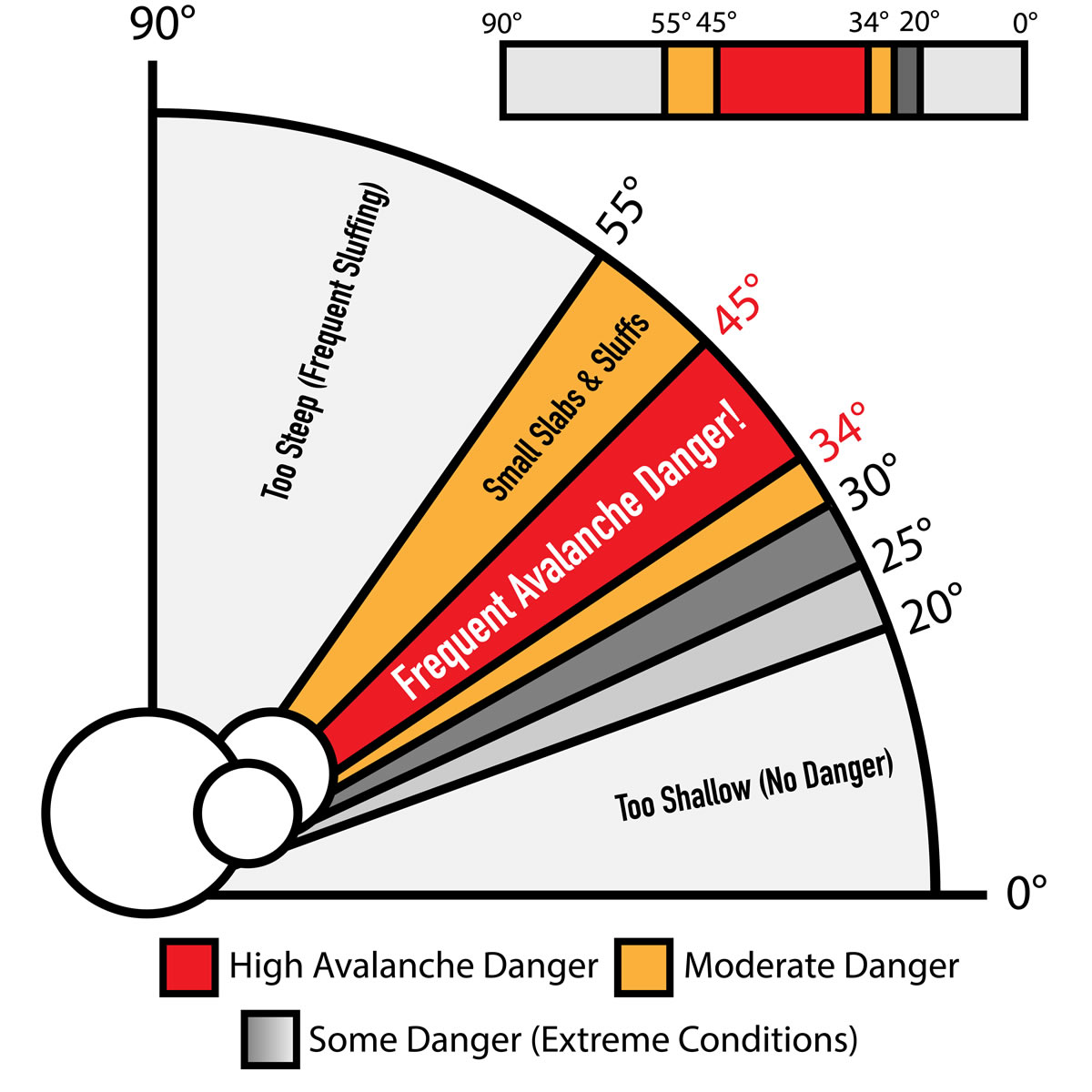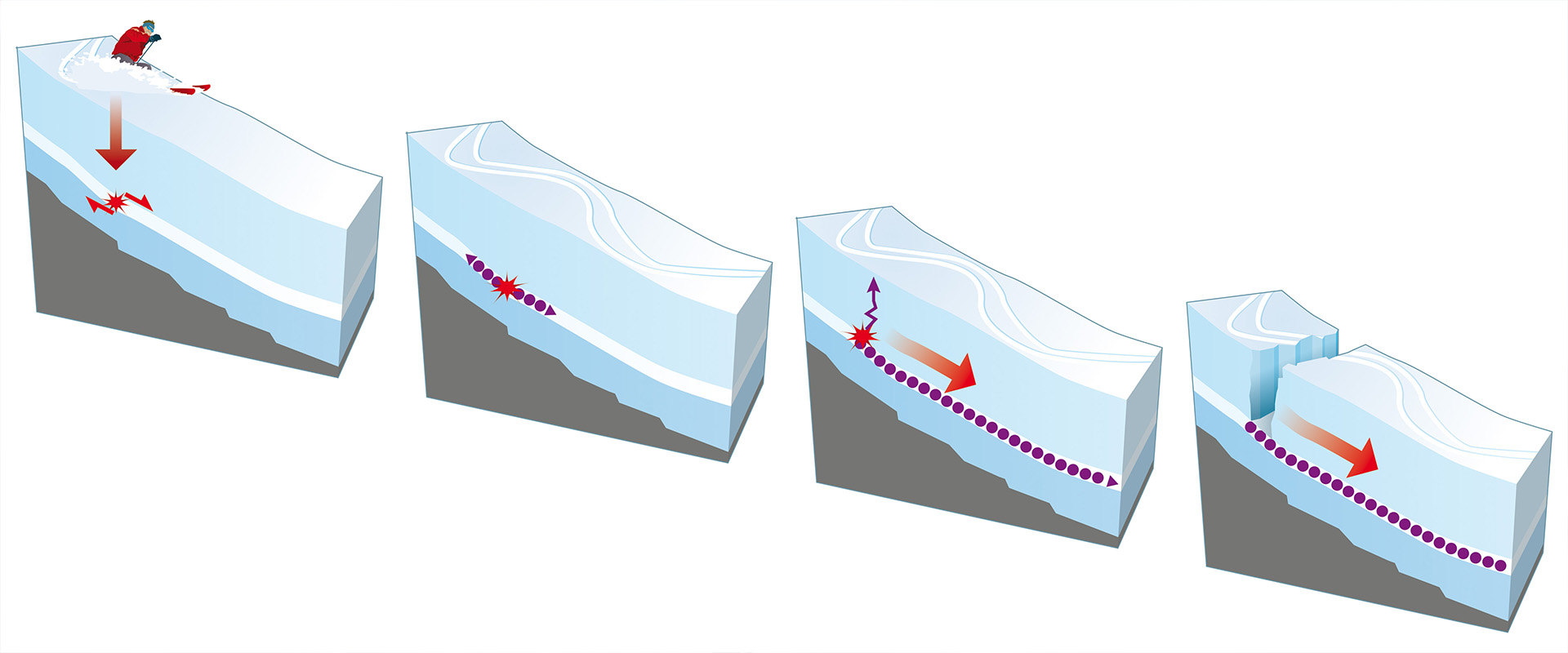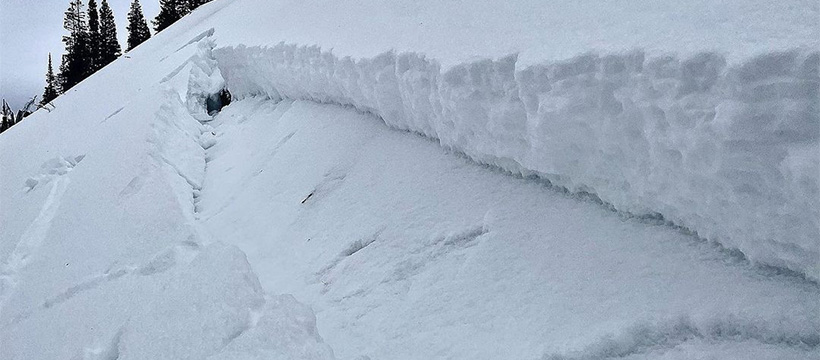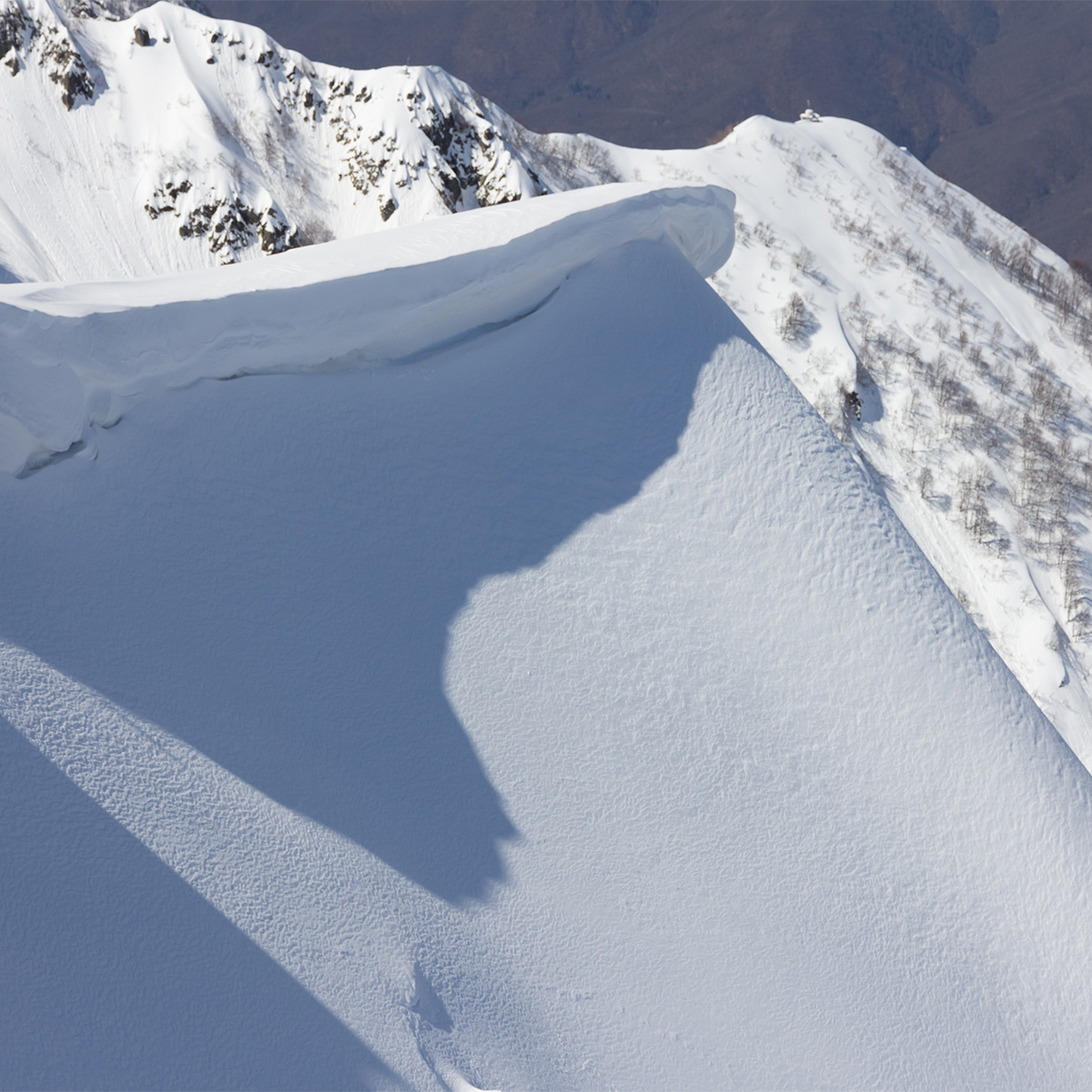Spotting Avalanche Danger
Mastering the art of assessing your own snowpack and identifying the subtle indicators of snow instability and avalanche risk is an absolute must when venturing into the backcountry. While weather forecasts and avalanche advisories offer valuable insights and general conditions, they fall short when it comes to pinpointing the likelihood of a specific slope giving way. It's the hands-on testing and keen observations that provide a more accurate gauge of avalanche danger at a particular spot. Your meticulous observations not only enhance your trust in local advisories but might also unveil hidden threats. We strongly urge all backcountry enthusiasts to grasp the basics of making observations and recognizing the red flags of avalanche danger. This guide is your key to understanding how to identify avalanche risks and conduct a basic snowpack analysis.
What Makes An Avalanche
-
1Avalanche TerrainSlopes 30 to 45-Degrees
-
2Unstable SnowpackSlabs On Week Layers
-
3A TriggerNatural Vs. Unnatural
Avalanches are the creation of three key elements: (1) avalanche terrain, (2) unstable snowpack, and (3) a trigger. If you remove any of these components, an avalanche will not occur. Careful evaluation of these three elements will determine the risk of riding in a particular area and test the veracity of local advisories and word-of-mouth.
Avalanche Terrain
In simple terms, Avalanche Terrain is any place where an avalanche could kick off, make its way down, or come to a halt. So, where's the kickoff zone for avalanches? Usually, it's those slopes in the 30 to 45-degree range. Anything less than 30º tends to stay put, while anything steeper than 45º might struggle to hold up enough snow to create slabs. Now, not every slope in that 30-45-degree sweet spot is necessarily dangerous. Always give your local avalanche advisories a once-over to get the lowdown on which elevations and faces are potential troublemakers. Also, familiarize yourself with the red flags and visual clues of avalanche danger.
Now, let's talk vegetation. Check out the lay of the land through the trees – they're like Mother Nature's breadcrumbs, guiding you away from potential slide zones. Forest patterns and foliage can help you spot avalanche danger quickly. If you notice a bunch of uprooted or snapped trees, it's a clear sign that avalanches have slid through the area before. On the flip side, a grove of sturdy, untouched trees is like a green light saying, "Safe to pass."

Watch out for terrain traps – they're not called "traps" for kicks. These are spots where avalanches might hit the brakes or get snagged, like boulders, trees, and gullies. Be smart about where the slide might go when things go south. Gullies and ravines can fill up with avalanche debris, becoming a nightmare scenario for anyone caught underneath (most avalanche victims buried under 6 feet or more don't survive). Rocks and trees puncture through a fast-moving slide and can cause serious injuries. About a quarter of avalanche deaths come from trauma. Don't forget lakes, rivers, and streams. If avalanches end up on ice sheets, their sheer force and weight is easily enough to break through the ice. It is entirely possible to be pulled underwater and drowned as a result of an avalanche. Typical terrain traps include gullies, cliffs, boulders, trees, lakes, rivers, and creeks – basically, spots you'd rather not be when the snow decides to move.
Snowpack
Snowpack is essentially layers of snow that build up after storms or wind. The stability of the snowpack depends on how these layers are formed and fused together. There are different types of snow surfaces and layers, but the crucial ones to know are the weak and strong layers. It's also helpful to understand terms like storm snow, surface crust, and slabs.
Relatively Weak Layers are made up of snow that fell or formed into loose crystals similar to sugar or beads – try making a snowball out of sugar. The flakes are icy, dry, and refuse to bond or stick. Have you ever tried to make a snowball with dry snow? Weak snow layers behave similarly. Since the snow refuses to compress and fuse, the layer becomes less dense and unable to support the weight of stronger and heavier snow deposits above. The more heavy snow found piled on top of a weak layer, the bigger the avalanche. Luckily, deep weak layers tend to heal faster as the weight and pressure can force the sugary deposits to compress and bond. In contrast, weak layers beneath a shallow snowpack or on shaded slopes can persist for months.
Relatively Strong Layers are the opposite of weak layers. They're composed of that nice, wet, fluffy snow we all love. It's clay-like in nature and can be compressed, stuck, and formed (like into a snowman). Because the snow is so dense and hard, it acts as an ideal foundation for additional layers. Ideally, a stable snowpack is composed of many strong base layers. However, similar to how weak layers can evolve into strong ones, strong ones can also transform into weak ones. The process occurs when dense snow layers dry out, crystalize, and rot over time. Frequent snowstorms diminish this problem by supplying the necessary weight, pressure, and moisture to heal a snowpack.

The immediate effects of a storm on a snowpack, both during and for hours or days afterward, can significantly influence the instability of the snowpack. This is due to the added stress of Storm Snow, especially if it has yet to bond to existing surface snow adequately. As the snowpack adjusts and compresses from fresh powder, avalanches and collapses are expected.
Surface Crust is formed when water or snowmelt freezes, creating a thin hard shell on the top of the snowpack. This is caused by melt/freeze cycles, rain, wind, sunlight, and pressure. Snow Crust is dangerous because it creates a hard bed surface for future avalanches or, when buried, can encourage the formation of a weak layer directly above it.
A Slab is a relatively strong layer of dense, cohesive snow directly above a weak layer or bed surface (like snow crust or the ground). Slab avalanches are among the most deadly types, as slabs increase the load on underlying weak layers. The larger, more dense the slab, the bigger the avalanche.
Utilizing their shovel and a snow saw, backcountry travelers can carefully excavate a small trench in a safe area of a hillside to analyze and determine the snowpack's structure and reveal any hidden dangers. Nearby hills facing the same direction with a similar slope will likely have the same snowpack composition. Avoid avalanche terrain with extensive weak layers and hard bed surfaces with large slabs deposited above them. Be extra careful during and after a storm.
Triggers
Avalanches can be triggered naturally, through human activity, or remotely—you don't necessarily have to be on an avalanche slab to set off an avalanche. Avalanches can be started from directly above a slope, beside it, or often unknowingly from a flat or gentle area beneath a hill.
Naturally occurring avalanches happen when there is a change in the weight distribution and/or density of the snowpack due to natural phenomena. These can occur after snow storms or windblown snow cause the weight to change drastically with big dumps. These changes can also occur as the snow settles or the snowpack melts. Naturally-triggered avalanches indicate a weak and changing snowpack and an increased likelihood of human-involved avalanches.
Human-triggered avalanches make up the majority of avalanches involving a person, meaning either the victim or someone in their party caused the snowpack to collapse and slide. These occur when the weight of a person or machine disrupts the weight distribution of the snowpack, causing a failure.
Stay mindful of how avalanches are triggered in your area—you can find this information in your local avalanche advisories. Understanding the common triggers in your area can help you gauge the sensitivity of the snowpack.
Red Flags & Visual Clues

Crack in Weak Snow Layer (Photo Credit: Brett Kobernik – Utah Avalanche Center)
Although local avalanche advisories provide vital information about current avalanche conditions, the snow is constantly changing. Backcountry travelers must know how to spot red flags. We've already discussed a few, like recognizing avalanche terrain, understanding snowpack stability, and identifying triggers. Now let's shift focus to some specifics.
Fresh Snow – we all love that pow pow. Unfortunately, 90% of human-triggered avalanches occur in fresh snow (during or after a storm), not to mention an increase in natural avalanches. Fresh snow causes a major spike in avalanche danger and necessitates extra caution.
Signs of Recent Avalanche Activity – are prominent warnings that avy danger shouldn't be taken lightly. If you see signs of recent activity (crown lines & any debris), take extra precautions. Note the elevation, direction/aspect, and slope of any slide, as similar hillsides have a high potential for avalanches.
Collapsing or Cracking – now that you understand the structure of a snowpack, you know that avalanches often fail when weak base layers collapse. If you see or hear collapsing or cracking, you are in immediate danger and should carefully vacate the area. It's common to feel the snow collapse beneath you, see surface cracking, or hear a "whumping" sound.
Wind – the wind is elemental to avalanche formation. Wind erodes snow in such a way that once deposited, it packs into a heavy and dense layer of snow that can easily overload existing weak layers. This process creates what is known as a wind slab – a deposit of dense snow located above a weak layer or bed surface. Here's what to look out for: (1) eroded snow – rough looking, often hard, and challenging to navigate. Since eroded snow has lost weight and load, it is actually more stable. (2) deposited snow – smooth and round, pillow-shaped, hard on top, and flaky below. Deposited snow can sound like a hollow drum—the more drum-like, the more dangerous. It's common to see cracks shooting away from you or to frequently fall through the slab. Wind slabs are a volatile form of snowpack and a common cause of avalanches. This is because wind-deposited snow can accumulate faster than storm-deposited snow. Adding that much weight, that fast, to a snowpack creates tremendous stress and can cause massive failure in the weak layers below.

Spotting these warning signs and performing your own evaluation can save your life. Our guide covered the basics you need to know to navigate the backcountry safely. We recommend exploring this topic further by taking an avalanche course and utilizing the resources available at avalanche.org.

